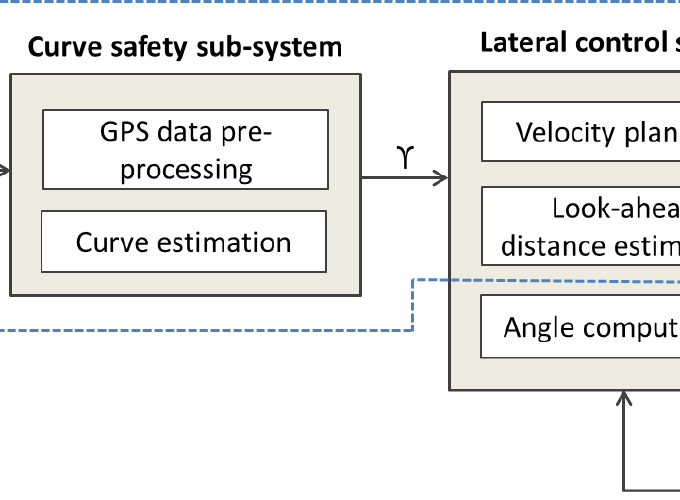Gps-Based Curve Estimation for an Adaptive Pure Pursuit Algorithm

Gps-Based Curve Estimation for an Adaptive Pure Pursuit Algorithm
Abstract
Different algorithms for path tracking have been described and implemented for autonomous vehicles. Traditional geometric algorithms like Pure Pursuit use position information to compute vehicle’s steering angle to follow a predefined path. The main issue of these algorithms resides in cutting corners since no curvature information is taken into account. In order to overcome this problem, we present a sub-system for path tracking where an algorithm that analyzes GPS information off-line classifies high curvature segments and estimates the ideal speed for each one. Additionally since the evaluation of our sub-system is performed through a simulation of an adaptive Pure Pursuit algorithm, we propose a method to estimate dynamically its look-ahead distance based on the vehicle speed and lateral error. As it will be shown through experimental results, our sub-system introduces improvements in comfort and safety due to the extracted geometry information and speed control, stabilizing the vehicle and minimizing the lateral error.
More detail can easily be written here using Markdown and $\rm \LaTeX$ math code.